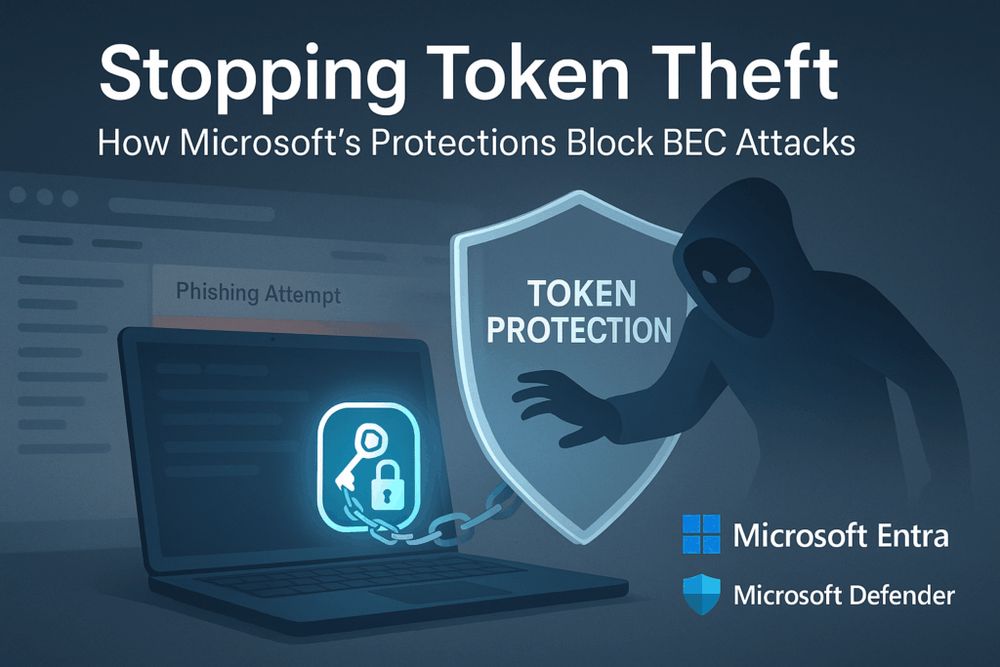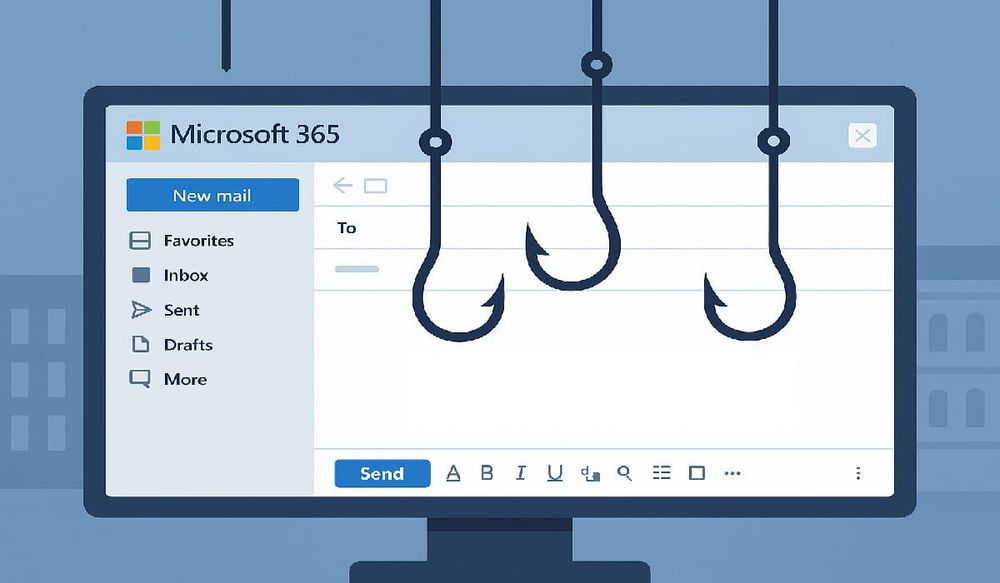
📌 Zero-Day Vulnerability in SonicWall Firewalls Exploited by Ransomware Groups https://www.cyberhub.blog/article/11090-zero-day-vulnerability-in-sonicwall-firewalls-exploited-by-ransomware-groups
05.08.2025 16:40 — 👍 0 🔁 0 💬 0 📌 0@cyberhub.blog.bsky.social
CyberHub.blog/landing – Automated cybersecurity intelligence → News, podcast, subreddit, ctf, cve and yt video summaries with Mistral AI CyberHub Feed: https://www.cyberhub.blog

📌 Zero-Day Vulnerability in SonicWall Firewalls Exploited by Ransomware Groups https://www.cyberhub.blog/article/11090-zero-day-vulnerability-in-sonicwall-firewalls-exploited-by-ransomware-groups
05.08.2025 16:40 — 👍 0 🔁 0 💬 0 📌 0
📌 SonicWall Advises Disabling SSLVPN Due to Rising Cyberattacks https://www.cyberhub.blog/article/11091-sonicwall-advises-disabling-sslvpn-due-to-rising-cyberattacks
05.08.2025 16:20 — 👍 0 🔁 0 💬 0 📌 0
📌 Advanced XSS Attack Bypasses 17 WAF Types: A New Threat Combining Parameter Pollution and JS Injection https://www.cyberhub.blog/article/11089-advanced-xss-attack-bypasses-17-waf-types-a-new-threat-combining-parameter-pollution-and-js-injection
05.08.2025 16:00 — 👍 0 🔁 0 💬 0 📌 0
📌 High-Level Hackers Exploit Raspberry Pi to Infiltrate Bank Network, Highlighting Critical Security Flaws https://www.cyberhub.blog/article/11088-high-level-hackers-exploit-raspberry-pi-to-infiltrate-bank-network-highlighting-critical-security-flaws
05.08.2025 15:20 — 👍 0 🔁 0 💬 0 📌 0
📌 Tesla Found Partially Liable in Fatal Autopilot Accident: Implications for Autonomous Vehicle Software https://www.cyberhub.blog/article/11085-tesla-found-partially-liable-in-fatal-autopilot-accident-implications-for-autonomous-vehicle-software
05.08.2025 15:00 — 👍 0 🔁 0 💬 0 📌 0
📌 64 vulnerabilities reported, 23 critical. Potential exploits identified in multiple categories. #CyberSecurity #Vulnerabilities https://tinyurl.com/28lwesdj
05.08.2025 14:42 — 👍 0 🔁 0 💬 0 📌 0
📌 Raspberry Robin Malware Exploits CLFS Vulnerability to Target Windows Systems https://www.cyberhub.blog/article/11083-raspberry-robin-malware-exploits-clfs-vulnerability-to-target-windows-systems
05.08.2025 14:40 — 👍 0 🔁 0 💬 0 📌 0
📌 CVE-2025-5477954-54795: Comprehensive Analysis of the Claude InversePrompt Vulnerability https://www.cyberhub.blog/article/11084-cve-2025-5477954-54795-comprehensive-analysis-of-the-claude-inverseprompt-vulnerability
05.08.2025 14:20 — 👍 0 🔁 0 💬 0 📌 0
📌 Major Thai private hospital fined 1.2M baht for using patient records as snack bags. Data protection authority reports five major cases. #CyberSecurity #DataPrivacy https://tinyurl.com/2dgohur8
05.08.2025 13:42 — 👍 0 🔁 0 💬 0 📌 0
📌 Critical Vulnerabilities in NVIDIA's Triton Inference Server Enable Remote Takeover of AI Systems https://www.cyberhub.blog/article/11081-critical-vulnerabilities-in-nvidias-triton-inference-server-enable-remote-takeover-of-ai-systems
05.08.2025 13:20 — 👍 0 🔁 0 💬 0 📌 0
📌 New Video from @JonGoodCyber Explores the Evolution of Computer Networks https://www.cyberhub.blog/article/11080-new-video-from-jongoodcyber-explores-the-evolution-of-computer-networks
05.08.2025 13:00 — 👍 0 🔁 0 💬 0 📌 0
📌 AI in software development poses new security challenges. Non-developers creating apps increases vulnerabilities. #CyberSecurity #AISecurity https://tinyurl.com/23vuz7vf
05.08.2025 12:42 — 👍 1 🔁 0 💬 0 📌 0
📌 Beijing's Long-Term Cyber Strategy: Targeting Microsoft SharePoint https://www.cyberhub.blog/article/11078-beijings-long-term-cyber-strategy-targeting-microsoft-sharepoint
05.08.2025 12:40 — 👍 0 🔁 0 💬 0 📌 0
📌 Generation Z's Side Hustles Increase Cybersecurity Risks: A Professional Analysis https://www.cyberhub.blog/article/11077-generation-zs-side-hustles-increase-cybersecurity-risks-a-professional-analysis
05.08.2025 12:20 — 👍 0 🔁 0 💬 0 📌 0
📌 Google patches six Android vulnerabilities, including two Qualcomm flaws exploited in targeted attacks. #CyberSecurity #Android https://tinyurl.com/2d8mb8av
05.08.2025 11:42 — 👍 0 🔁 0 💬 0 📌 0
📌 Global TikTok Shop Users Targeted in Large-Scale Phishing and Malware Campaign https://www.cyberhub.blog/article/11075-global-tiktok-shop-users-targeted-in-large-scale-phishing-and-malware-campaign
05.08.2025 11:20 — 👍 0 🔁 0 💬 0 📌 0
📌 San Francisco is now the AI tech hub, 30 miles north of Meta and Google HQs. Home to numerous AI startups. #AITech #TechHub https://tinyurl.com/2by32dnz
05.08.2025 10:42 — 👍 0 🔁 0 💬 0 📌 0
📌 Cybersecurity M&A Activity Surges with 44 Deals in July 2025 https://www.cyberhub.blog/article/11071-cybersecurity-ma-activity-surges-with-44-deals-in-july-2025
05.08.2025 10:40 — 👍 0 🔁 0 💬 0 📌 0
📌 LeakInsight API: A Comprehensive Tool for Detecting Leaked Credentials https://www.cyberhub.blog/article/11072-leakinsight-api-a-comprehensive-tool-for-detecting-leaked-credentials
05.08.2025 10:20 — 👍 0 🔁 0 💬 0 📌 0
📌 Southeast Asian telecoms targeted by state-sponsored threat actor CL-STA-0969, installing stealthy malware for remote control. #CyberSecurity #Telecom https://tinyurl.com/266zaca9
05.08.2025 09:42 — 👍 0 🔁 0 💬 0 📌 0
📌 Microsoft's Token Protection: A Proactive Approach to Preventing BEC Attacks https://www.cyberhub.blog/article/11069-microsofts-token-protection-a-proactive-approach-to-preventing-bec-attacks
05.08.2025 09:20 — 👍 0 🔁 0 💬 0 📌 0
📌 Early registration for the first OpenSSL 2025 conference is now open. Event on August 4, 2025, in Newark, USA. #CyberSecurity #OpenSSL https://tinyurl.com/28kk3ocg
05.08.2025 08:42 — 👍 0 🔁 0 💬 0 📌 0
📌 Attackers Exploit Microsoft 365's Direct Send for Internal Phishing Campaigns https://www.cyberhub.blog/article/11066-attackers-exploit-microsoft-365s-direct-send-for-internal-phishing-campaigns
05.08.2025 08:40 — 👍 0 🔁 0 💬 0 📌 0
📌 NIST Finalizes SP 800-63-4 Digital Identity Guidelines: Key Updates and Implications https://www.cyberhub.blog/article/11067-nist-finalizes-sp-800-63-4-digital-identity-guidelines-key-updates-and-implications
05.08.2025 08:20 — 👍 0 🔁 0 💬 0 📌 0
📌 Qilin ransomware group responds to security allegations reported by GBHackers. Marco A. De Felice of SuspectFile obtained three statements. #CyberSecurity #Ransomware https://tinyurl.com/2bpbqgfv
05.08.2025 07:42 — 👍 0 🔁 0 💬 0 📌 0
📌 Perplexity AI Accused of Ignoring Web Scraping Blocks: A Cybersecurity Analysis https://www.cyberhub.blog/article/11063-perplexity-ai-accused-of-ignoring-web-scraping-blocks-a-cybersecurity-analysis
05.08.2025 07:20 — 👍 0 🔁 0 💬 0 📌 0
📌 Techniker Krankenkasse to reintroduce Videoident for easier access to electronic patient records. #CyberSecurity #Healthcare https://tinyurl.com/23lgvk93
05.08.2025 06:42 — 👍 0 🔁 0 💬 0 📌 0
📌 KimSuky Cyberespionage Group: Remote Control Techniques and Impacts https://www.cyberhub.blog/article/11060-kimsuky-cyberespionage-group-remote-control-techniques-and-impacts
05.08.2025 06:40 — 👍 0 🔁 0 💬 0 📌 0
📌 New Ransomware Wave Targets Microsoft SharePoint Servers Amid Global Surge https://www.cyberhub.blog/article/11061-new-ransomware-wave-targets-microsoft-sharepoint-servers-amid-global-surge
05.08.2025 06:20 — 👍 0 🔁 0 💬 0 📌 0
📌 "ClickTok" campaign targets TikTok Shop users, draining crypto wallets. SparkKitty spyware spreads via trojan apps and phishing. #CyberSecurity #TikTok https://tinyurl.com/2yv6axj4
05.08.2025 05:42 — 👍 0 🔁 0 💬 0 📌 0